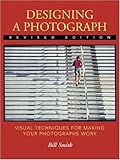[easyazon-link asin=”1401229697″]Daytripper[/easyazon-link] – Gabriel Ba and Fabio Moon: A lush, moving and beautifully illustrated graphic novel tells the story of obituary writer Brás de Oliva Domingos and his life. Themes of love, redemption, friendship, fatherhood, work and the purpose of life intertwine with each chapter. At first, Daytripper’s gimmick seems abrupt, but as it progresses, the narrative builds as time jumps back and forth within Domingo’s life. The supporting cast of characters serve their purpose with purpose as part of the story. Ba has written a meaningful story and Moon colorfully illustrates each page with artwork that feels alive.
[easyazon-link asin=”1607061597″]Chew Volume 1: Taster’s Choice[/easyazon-link] – John Layman and Rob Guillory: Tony Chu is a cibopath, able to discern an entire history of an object by eating it. He’s also a cop, who after a botched arrest, is hired by the Food and Drug Administration, where in the world of Chew, is the most powerful government agency in the U.S., due to an ongoing bird flu pandemic. He is teamed with a fellow cibopath, Savoy to solve a case of a missing FDA inspector. Chew is a bizarre concept, surreal at best, playful but serious in the story its telling. This is not for the squeamish. Guillory’s artwork is colorful and lively and brings an animated feel to Layman’s story. Definitely work checking into other trade paperbacks.
[easyazon-link asin=”1401229654″]iZombie Vol. 1: Dead to the World[/easyazon-link] – Chris Roberson and Mike Allred: Gwen is a zombie, but not a conventional zombie. She needs to eat a brain once a month to stay functional or else she starts to go crazy. Her two friends are Stacy a ghost who died in the 60s and a wereterrier (like a werewolf but not quite as vicious) named Spot. Add a mysterious man with connections to the past, a covert monster hunting group, and various factions of undead, you’ve got the concept. The characters are simple, the conflict pretty generic and the artwork, while well drawn, doesn’t add life to the story. In this first trade, the story doesn’t get interesting until the last chapter.
[easyazon-link asin=”1607060906″]Dead@17: Ultimate Edition[/easyazon-link] – Josh Howard: This collects the first four trade paperbacks of the Dead at 17 series, which features Nara Kilday fighting the undead and evil spirits. The art is light, animated and clean, and gets better as the series progresses. The story rarely veers from the pattern of conspiracy of the undead controlling some power that needs to be stopped. There are some unique twists, and depending on your patience, decent subplots. At times, the narrative feels rushed and overly wordy at times. Surprisingly, there are strong Christian undertones of life and redemption.
[easyazon-link asin=”1401213170″]Scalped Vol. 1: Indian Country[/easyazon-link] – Jason Aaron and R.M. Guerra: A gritty, modern noir set on an indian reservation in the Dakotas. Dash Bad Horse ran away from the reservation at 15 to make a life for himself, and now enforces law for Lincoln Red Crow on the Prairie Rose Indian Reservation. The characters and interactions are complex and violent. Definitely worth following and reading additional trade paperbacks.

 that tells of her growth as a creative individual. This creative individual is also a confident woman, business woman, mother, daughter, wife, keen and self aware of the life she lives. All these roles culminate as she recounts the perfect storm of getting Oprah to shoot a scene for 30 Rock, play Sarah Palin for the first time on SNL and pull of her daughter’s third birthday, complete with pirate cake. The lessons she learned from her father, Lorne Michaels, traveling with Second City and running a neighborhood theater kept her together for those crucial few days.
that tells of her growth as a creative individual. This creative individual is also a confident woman, business woman, mother, daughter, wife, keen and self aware of the life she lives. All these roles culminate as she recounts the perfect storm of getting Oprah to shoot a scene for 30 Rock, play Sarah Palin for the first time on SNL and pull of her daughter’s third birthday, complete with pirate cake. The lessons she learned from her father, Lorne Michaels, traveling with Second City and running a neighborhood theater kept her together for those crucial few days.


